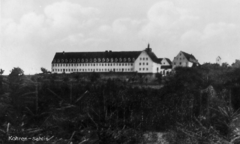Key Terms & Concepts
Key terms & concepts relating to the stolen children phenomenon
-
United Nations Convention on the Rights of the Child
In 1989, the leaders of 140 countries made a historic commitment to the world’s children by adopting this agreement. It has become the most widely ratified human rights treaty in history and has helped transform the lives of many children around the world.
-
The Convention on the Prevention and Punishment of the Crime of Genocide
The Genocide Convention was the first human rights treaty adopted by the General Assembly of the United Nations, on 9 December 1948, and signified the international community’s commitment to “never again” after the atrocities committed during the Second World War. Its adoption marked a crucial step towards the development of international human rights and international criminal law as we know it today.
-
The Lebensborn Programme
The Lebensborn programme was launched in 1935 by Heinrich Himmler, the head of the SS. The term “Lebensborn” means “Fountain/Spring of Life”. Its main goal was to increase the Germanic/Nordic population of Germany based on Nazi eugenics (also called “racial hygiene” by some eugenicists).
-
The Lebensborn home in Kohren-Salis, near Leipzig, Germany
Sonnenwiese
The Lebensborn homes and maternity wards were part of the Population & Race Policy of the Lebensborn programme. Their purpose was to help increase the “Aryan” population of Germany in two ways – it was a place for unmarried “racially valuable” mothers and a place where kidnapped “Aryan-looking children” from occupied territories were “Germanized”.
-
Germanization
The terms “Germanization” (Eindeutschung) and “re-Germanization” (Wiedereindeutschung) were used by the Nazis to describe a process of “transforming non-Germans into Germans”.
-
“Aryan Race”
For years before he rose to power and became the Chancellor of Germany, Adolf Hitler was obsessed with ideas about race which he promoted through his speeches and writings. These notions revolved around the concepts of racial “purity” and the superiority of the “Aryan master race”.
-
Being/Feeling Uprooted – Effects and Consequences
Being uprooted in childhood leaves a lasting effect, impeding a child’s and later an adult’s ability to feel a sense of belonging, of having roots.
-
Eugenics (or: Racial Hygiene)
Eugenics, or “racial hygiene”, was a scientific movement of the late nineteenth and early twentieth centuries that inspired a significant number of Nazi policies.
-
Unaccompanied Minor Refugees
An “unaccompanied child” is a child separated from both their parents and other relatives who is not being cared for by any other adult who, by law or custom, is responsible for doing so.








